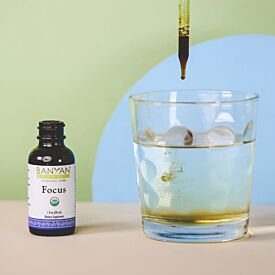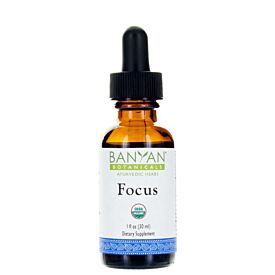An Introduction to Pranayama
Have you ever noticed how often we use the word “breath” in our daily lives? We use phrases like, “I’m not going to hold my breath,” “Like a breath of fresh air,” “I have to catch my breath,” “It took my breath away,” “Take a deep breath first,” and so forth. In all these instances, we are emphasizing the importance of something that we take for granted every moment. The breath plays a vital role in Ayurveda as well.
Each of the three doshas in Ayurveda has five sub-doshas. Vata is the energy of movement, and one of its sub-doshas is prana vayu, which is located in the head and the chest. Prana vayu governs respiration and forward momentum, and it is responsible for the intake of everything into the body, from air and food to senses and thoughts. Prana vayu works in conjunction with the breath, welcoming not only oxygen, but also the vital life force of prana into the body.
In the ancient Ayurvedic texts, the functions of vata are described in the same manner that the yogic texts describe prana. This is no coincidence—Ayurveda is the system of healing that is traditionally used in conjunction with hatha yoga.
The classical yogic texts beautifully describe the eight limbs of yoga, and one of these limbs is pranayama, commonly translated as “control of the breath.” Yoga teachers often provide guidance on how to direct the breath to certain areas of the body during yoga sequences. Many teachers even start their classes with a pranayama practice to help center the students.
“Pranayama is the heart of yoga. Yoga is lifeless without pranayama.”
The Meaning of “Pranayama”
The word prana translates as “life, breath, respiration, strength, energy, and vitality.” Ayama means “expansion, length, stretch, regulation, control, prolongation, and breadth.” We can thus translate pranayama as the prolongation of the breath and its control or restraint.
The Benefits of Pranayama:
- Reduces the breaths needed per minute by encouraging increased lung capacity
- Promotes keen awareness, memory, and concentration
- Supports the internal organs to perform their functions with less energy output
- Maintains healthy blood pressure
- Encourages proper circulation of blood and plasma
- Cleans and clears the nasal passages
- Bolsters a healthy immune response
- Promotes a healthy functioning heart and cardiovascular system
- Delivers oxygen to the body and encourages the natural removal of toxins
- Supports vitality and a graceful aging process
- Renews all the tissues of the body
- Calms excess vata in the nervous system
- Kindles agni and promotes healthy digestion
Your yoga teacher or Ayurvedic practitioner can teach you pranayama breathing practices. And there are many different types—some affect certain doshas, tissue layers, or bodily systems, while others are more all-around balancing. It is helpful to know your vikruti (current state of balance) before beginning the practice of pranayama. This information can help inform which breathing practice will be most appropriate for you.

Pranayama should not be practiced if you have a heart condition, fever, lung congestion, headache, or psychological disorder. If you are pregnant or undergoing chemotherapy or radiation, then you should not practice pranayama without guidance from your medical advisor.
Preparing for Pranayama
Try to perform pranayama on an empty stomach. It is best practiced in the early morning, ideally before sunrise. You may wish to do it before your meditation practice so that your mind is quiet. If weather permits, it is preferable to practice pranayama outdoors in the fresh air where prana itself is naturally abundant. You may enjoy creating a ritual of practicing pranayama at the same time every day and in a sacred space filled with special symbolic objects or fresh cut flowers—and don’t forget to unplug from potential distractions such as a cellphone, tv, or computer.
“When the breath wanders, the mind is unsteady, but when the breath is still, so is the mind still.”
Step By Step: Nadi Shodhana (Alternate Nostril Breathing)
One type of pranayama that can be practiced by most everyone is Nadi Shodhana (Alternate Nostril Breathing).
If you are new to this technique, begin with a low number of rounds, such as twelve. You will do an equal number of inhalations and exhalations through both the right and left nostrils.
As with meditation, your posture is very important in pranayama. Sit cross legged on the floor, and if your body will allow, move into Lotus Pose (Padmasana). You may also sit on a chair with your feet firmly planted on the floor. Make sure your back is straight, but not rigid, so that the breath moves freely.
Tuck your chin down so it is gently resting in the notch between the collar bone. Exhale once through both nostrils to clear the nasal passages.
Rest your left hand on your left knee. The right hand is traditionally used in pranayama. Take your right index and middle fingers and fold them into your palm.
Bring your right thumb to rest on your right nostril and your right ring and pinky fingers to rest on your left nostril. Close your eyes and your mouth. Breathe through your nose only.
Gently press the right nostril closed, and inhale through the left nostril. Begin by inhaling for a slow, steady count of five. Then gently press your left nostril closed and exhale out of your right nostril for a count of five. Next, inhale through your right nostril for a count of five. After that, press the right nostril closed and exhale through your left nostril again. You have just completed one round of Nadi Shodhana!
Repeat this process until you have reached your goal in terms of the number of rounds or your approximate time limit. Once you are comfortable in the technique, start paying attention to what is happening to you internally. Has your mind become more quiet? Do you feel less anxious and more at ease with life? While the yogic texts recommend practicing for a minimum of 15 minutes daily, the focus should not be on a number, but rather on the benefits of stillness and serenity that the practice offers.
Once you have finished, take a few minutes to rest. Do not get up or start talking immediately after your practice. Relish the inner poise that you have generated. This is the perfect time to move into your meditation practice, or if you’ve never tried meditating, maybe now is the time to give it a try.
As time passes, you can increase the count of each inhalation and exhalation from five to a higher number. This will elongate your breathing and help to build endurance and lung capacity. Pranayama is a gateway to our inner experience and it can help us stay in a mindful state throughout the day. Try the ancient practice of pranayama, it will literally be a joyous breath of fresh air in your life!








